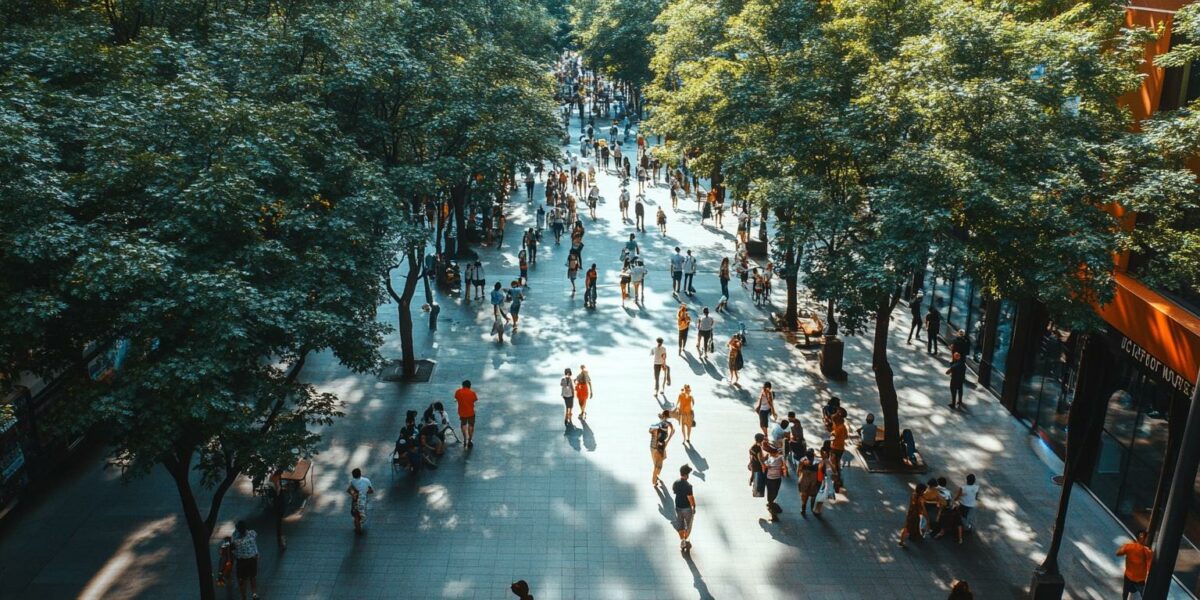Transforming Urban Heat Islands with Green Solutions
In bustling cities like Detroit, residents feel the heat as they navigate sun-drenched streets. This year, the city embarked on a mission to change that by planting a blossoming canopy of trees. These new green spaces aim to combat rising temperatures and provide much-needed relief from the scorching sun.
Globally, cities are recognizing the importance of trees in mitigating climate change. The United Nations has called for sustainable cooling solutions that include planting trees and utilizing reflective building materials. Their recent report emphasizes the need for green initiatives to prevent exacerbating global warming.
The goal is clear: achieve near-zero emissions from cooling by 2050. This involves a strategic reduction in air conditioners and a boost in energy efficiency standards. Riahi from the UNEP-led Cool Coalition highlighted the urgent need to cool our planet without generating more heat.
With cooling accounting for 20% of global electricity usage, the demand for efficient solutions is crucial. Projections indicate a tripling of equipment demand by 2050, leading to doubled electricity consumption. The UNEP stresses the importance of innovative approaches to curb emissions and promote sustainable cooling.
Historical Investments and Urban Tree Initiatives
The U.S. Forest Service recently received a historic $1.5 billion investment through the Inflation Reduction Act for urban forestry. Typically receiving about $40 million annually, the program has seen a surge in applications as heat records continue to break. Nearly 400 projects have been selected for funding, marking a significant step towards urban greening.
The high costs of planting and maintenance often hinder such projects. Transforming paved spaces into green areas involves substantial expenses, particularly in the removal of asphalt or concrete. Despite these challenges, the benefits of increased tree cover in urban areas are immense.
Key advantages include:
- Lowering surface and air temperatures
- Improving air and water quality
- Enhancing property values
These benefits demonstrate the multifaceted impact of urban forestry on community well-being and environmental health.
Urban heat islands, characterized by abundant heat-absorbing surfaces, disproportionately affect city residents. Increasing a city’s tree canopy by just 10% can lower temperatures by 1.8 degrees Fahrenheit, according to the Smart Surfaces Coalition. Their integrated approach to cooling highlights the importance of urban trees and innovative surfaces.
Community Efforts and Long-Term Benefits
As Detroit expands its tree planting efforts, residents like Eric Jones emphasize the significance of cooling benefits. Despite concerns about nuisances such as squirrels and falling leaves, the advantages of shade and cooler temperatures outweigh the drawbacks. Trees also help improve air quality and reduce stormwater runoff.
Detroit’s plan to plant 75,000 young trees over five years aims to create widespread environmental benefits. While it will take time for these trees to mature and provide significant impacts, the long-term vision is clear: sustainable urban cooling for future generations.
Meadows, with their grasses and native plants, can also play a crucial role in urban cooling. Reflecting sunlight and absorbing less heat than concrete, these green spaces complement tree planting efforts. Detroit’s Palmer Park, with its tall flowering plants, exemplifies the potential of meadow-based cooling.
The U.S. Forest Service’s prioritization of historically marginalized and underserved communities ensures that these initiatives address environmental justice. Minority and low-income communities, often lacking tree cover, face disproportionate heat impacts. Targeted projects aim to mitigate these disparities and promote equitable cooling solutions.
Innovative Approaches to Urban Cooling
Research has shown a stark contrast in tree canopy coverage between predominantly white and minority communities. Historical redlining practices have led to significant disparities in urban tree cover. Addressing these inequities through strategic planting can enhance urban resilience against extreme heat.
In Baton Rouge, Louisiana, community groups are planting citrus trees around public housing. Supported by a $6 million grant, these efforts aim to combat food insecurity, expand urban canopies, and increase environmental awareness. These initiatives highlight the transformative potential of community-driven greening.
For residents like Jacquel Curry, the benefits of urban trees extend beyond cooling. Shade from citrus trees can lower electricity bills, while providing fresh fruit and enhancing environmental quality. Such projects reflect a holistic approach to urban sustainability.
As cities like Detroit and Baton Rouge implement these green solutions, the broader goal is to reverse the trend of urban heat islands. By prioritizing tree planting and innovative cooling strategies, communities can create healthier, more resilient urban environments. The journey towards a cooler, more sustainable future starts with local actions and collective efforts.



jeremiahvoyager
Thank you for shedding light on this issue. We need more awareness and action to make our cities healthier places to live.
Willow
Planting trees is great and all, but what about the allergies they cause? 😅
charlie5
Interesting read, but I can’t help but wonder: Are there any downsides to planting so many trees in urban areas?
robertempyrean
But who is going to pay for all these trees and their maintenance? This sounds expensive!
liam5
Great article! It’s amazing how something as simple as planting trees can have such a big impact. Thanks for sharing!
HannahOasis
This is truly concerning. Why haven’t more cities taken action sooner?
harmony_monolith
Wow, I had no idea trees could make such a difference! How can we get our city to start a similar initiative? 🌳